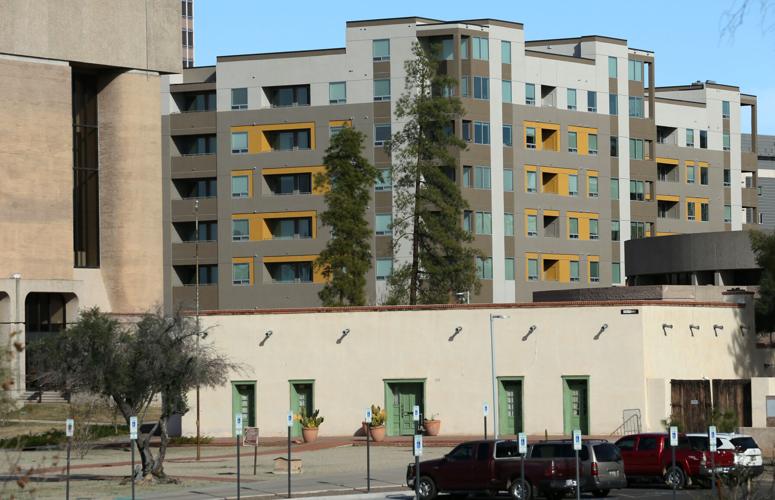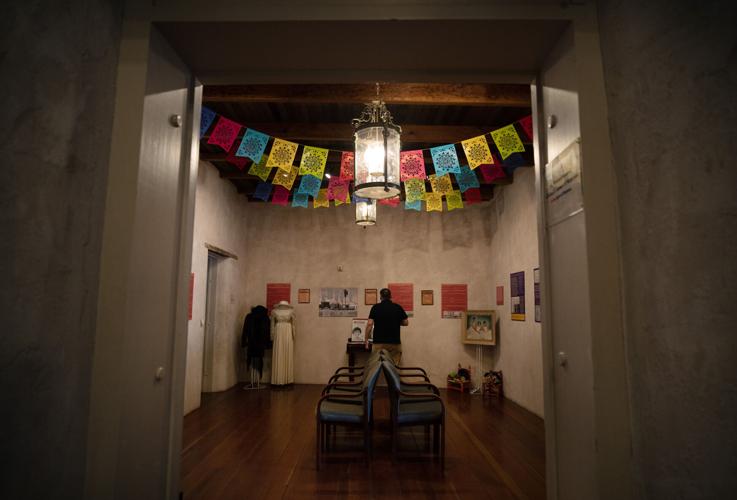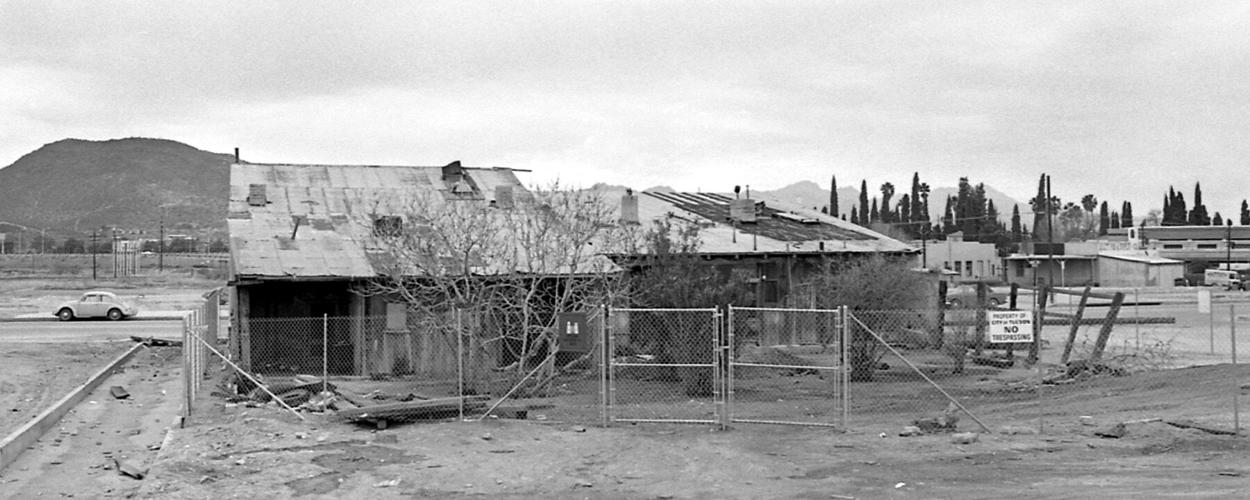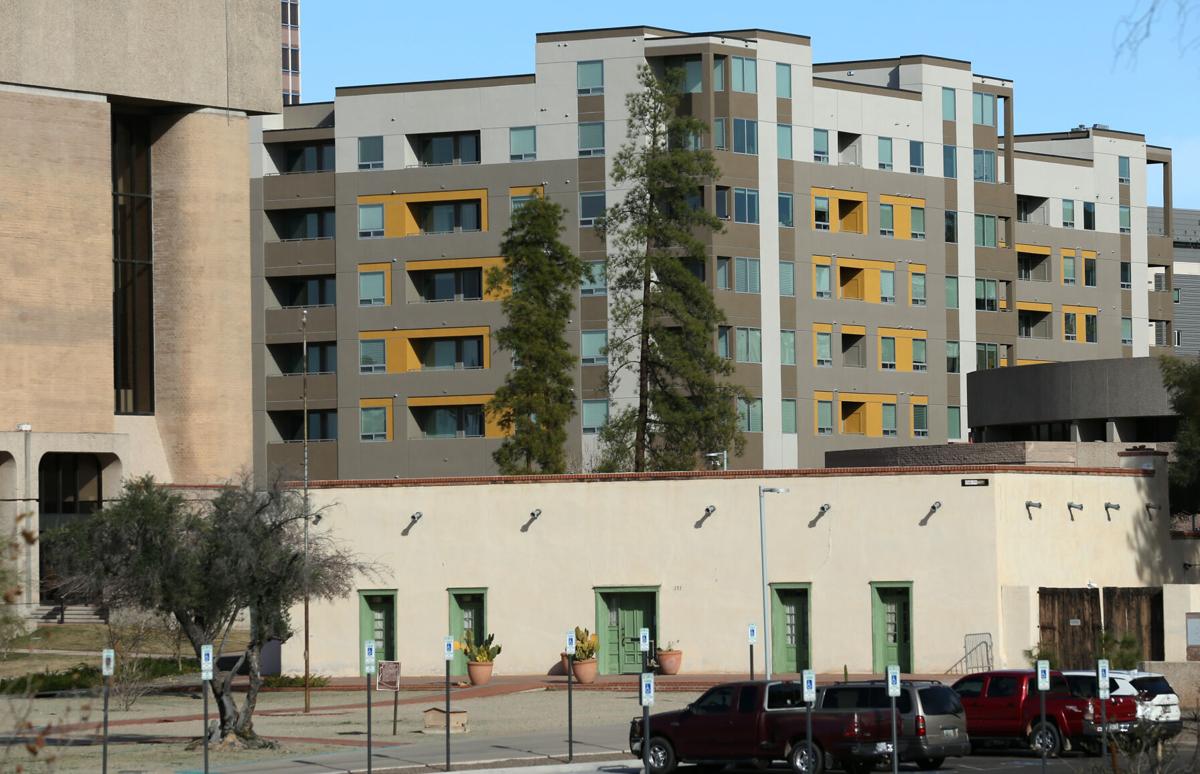The Arizona Historical Society has agreed to sell a 19th century adobe house in downtown Tucson that has been in the agency’s hands since it was saved from demolition in 1971.
Society board members voted unanimously Friday to accept an offer from Rio Nuevo to buy the Sosa-Carrillo House and preserve it as an educational and cultural site.
The traditional Sonoran row house, finished in 1880, was one of only a handful of buildings to be spared when 80 acres of Tucson’s oldest Mexican-American barrio was razed to make way for construction of the Tucson Convention Center.
In recent years, the historical society identified — but had so far been unable to fund — almost $1.3 million in renovations needed to protect the structure and improve it as a museum and events venue.
Selling the property to Tucson’s tax-supported urban improvement district will allow that work to be done.
Under the deal, Rio Nuevo will buy the house for its appraised value of $1.05 million, but the historical society will only collect about $100,000 of that. The rest will be used to pay for restoration.

An exhibit on the life of columnist and activist Alva Torres in a room of the historic Sosa-Carrillo House in Tucson.
Historical Society Executive Director David Breeckner called it “a unique solution” to a “challenge of stewardship” the agency faces at its historic properties across the state.
He said he is excited to see the Sosa-Carrillo House “revitalized” under Rio Nuevo’s ownership. “AHS is not looking to profit on this whatsoever,” he said.
Breeckner added that the purchase agreement requires the house to be preserved for its current use, so “it can’t be turned into a Starbucks” someday.
Ownership of the property will revert back to the historical society in 2035, when the tax-district is slated to be dissolved.
The 19th century house was built by prominent local businessman Leopoldo Carrillo on land previously owned by the pioneering family of José María Sosa, an ensign who served in the Spanish presidios of Tucson and Tubac in the 1770s.
The residence was passed down through the Carrillo family until 1968, when the city of Tucson took the property by eminent domain.
After that, the building — then known as the Frémont House for its tenuous link to 19th century military leader and Arizona territorial governor John C. Frémont — underwent extensive renovations as some 250 homes and businesses surrounding it were bulldozed.
Construction of the convention center complex displaced more than 700 residents, many of them people of color from low-income households. For many, the Sosa-Carrillo House, wedged between the convention center and the Linda Ronstadt Music Hall, serves as a symbol of what was lost in the name of that so-called “urban renewal.”

The back of the Sosa-Carrillo House and the large fig tree located behind the building on February 16, 1969. The tree was saved and is still there.
Delicate and expensive work is now needed to restore the building’s original adobe, which has been damaged by the cement-based plaster that was applied to the bricks in the early 1970s.
The 1880 home saved from urban renewal 50 years ago is in need of repair.
The house at 151 S. Granada Ave. also needs a new roof and air-conditioning system, upgraded electrical wiring, and improvements to its 50-year-old bathrooms and kitchen so it can better host wedding receptions and other special events.
The Sosa-Carrillo House currently hosts the Mexican American Heritage and History Museum and two nonprofit tenants: Borderlands Theater and Los Descendientes de Tucson, the heritage organization that operates the museum.
Rio Nuevo has offered both groups 5-year leases that would allow them to stay for $1 a month.
Breeckner said the historical society also plans to remain involved as a partner in the continued preservation of the house.
After Friday’s vote, historical society board president Linda Whitaker said Rio Nuevo board chairman Fletcher McCusker deserved to be acknowledged for opening the door for the discussions.
“I’m looking forward to what this next phase brings,” Whitaker said.
Photos: The Sosa-Carrillo House and urban redevelopment in Tucson

The Sosa-Carrillo House on February 16, 1969, spared from destruction after the city demolished a number of historic buildings under the guise of urban renewal.

The historic Sosa-Carrillo House, which houses the Mexican-American Heritage and History Museum, 151 S. Grande, Tucson, on Jan. 11, 2023. The home dates to the 1880s. It is one of the only remaining homes from Barrio Libre, which was destroyed in the 1960s to make way for the Tucson Convention Center and Music Hall.

Spalling of the exterior stucco on the historic Sosa-Carrillo House in Tucson due to ground moisture seeping into the underlying adobe, shown on Jan. 11, 2023.

An exhibit on the life of Alva Torres in a room of the historic Sosa-Carrillo in Tucson on Jan. 11, 2023.

St. Augustine Cathedral (lower left) on Stone Avenue in Tucson in 1946. Note the gas station to the right of the church. It's now the courtyard and new diocese offices. The parking lot to the right is now the La Placita parking garage. Most of the buildings shown behind the church were demolished during the urban redevelopment projects in the 1960s.

Three historic buildings: The Sosa-Carrillo House, far left; the Capt John Burgess House, and the Sabino Otero Home, right, on South Main Avenue on September 15, 1965. Main Avenue was demolished, the Sosa-Carrillo House was saved, the Otero home was taken apart in numbered sections but never reassembled.

Work on the new $15 million arena and exhibition area of the Tucson Convention Center, top center, progressing along with the music hall, right, on September 17, 1969. Spared from destruction: La Placita park and gazebo, foreground, Mariano Sanmaniego House, far left, and the Sosa-Carrillo House next to the music hall.

The Sosa-Carrillo House in 1971, prior to restoration. The TCC Music Hall is under construction in the background.

The historic Sosa-Carrillo house, which dates back to Tucson's incorporation in the 1870s, surrounded by a city on the rise. At left, the Linda Ronstadt Music Hall, The Flin Apartments (formerly La Placita Office Complex) and the Leo Rich Theater on Jan. 11, 2023.

The historic Sosa-Carrillo House in Tucson on Jan. 11, 2023.

The Sosa-Carrillo House isolated in 1968 after demolition of Barrio Libre in Tucson. The streets of the Barrio – Main Ave., Meyer St. and McCormick St. – were also demolished when construction began for the Tucson Convention Center and Music Hall.

Stains on interior stucco due to water damage at the Sosa-Carrillo House in Tucson on Jan. 11, 2023.

Cracking in the stucco on the exterior of the Sosa-Carrillo House in Tucson on Jan. 11, 2023.

The main entryway of the historic Sosa-Carrillo House in Tucson on Jan. 11, 2023.

Spalling and water damage on an exterior patio wall at the Sosa-Carrillo House in Tucson on Jan. 11, 2023.

Downtown Tucson, looking northeast, in the 1940s. Barrio Libre in the foreground was bulldozed in the 1960s to make way for the Tucson Convention Center and Symphony Hall.

First Lady Pat Nixon with Tucson Mayor Lew Murphy at the dedication ceremony for the restored Sosa-Carrillo-Fremont House on April 8, 1972.

The remains of the Sabino Otero house on May 8. 1969 as it was being disassembled. Otero was the heir to an 18th century Spanish land grant and he lived at this home on 219 S Main Ave. Although the building was considered to have historic significance, it was taken down to make way for the Tucson Convention Center. Parts of it were used to restore the Sosa-Carrillo House, background left.

The back of the Sosa-Carrillo House and the large fig tree located behind the building on February 16, 1969. The tree was saved and is still there.







